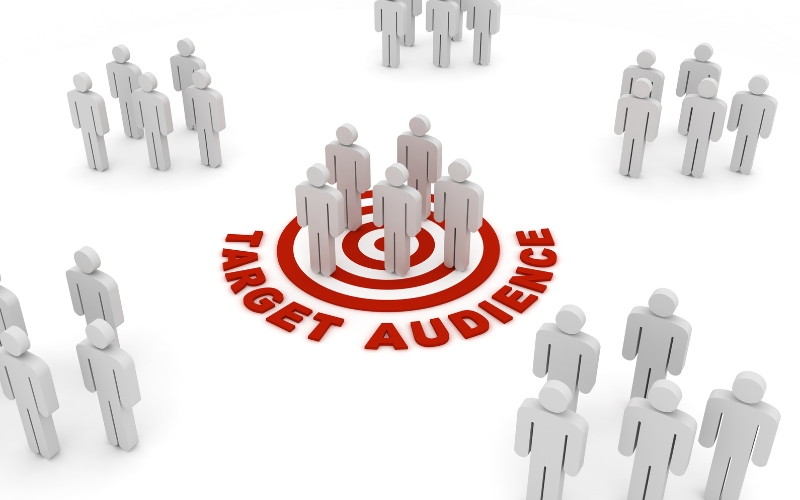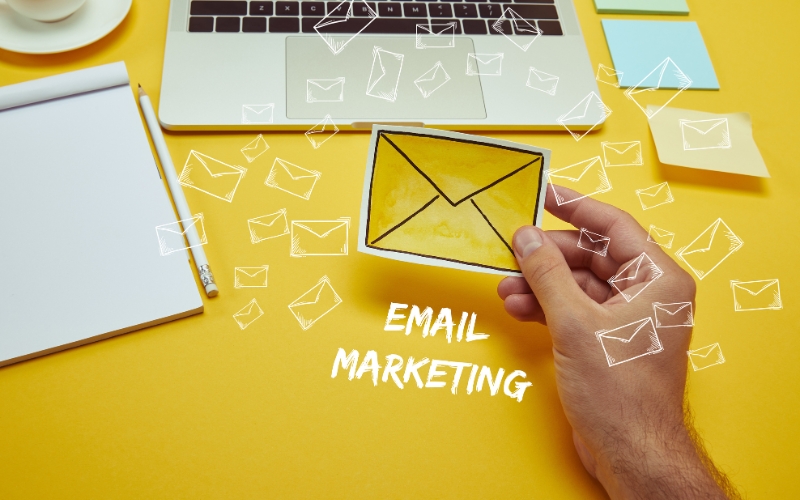
In today’s fast-paced digital world, personalization is the cornerstone of any successful email marketing campaign. As 2025 approaches, understanding your audience and tailoring your emails to meet their unique needs is more important than ever. Personalized content leads to higher engagement rates, increased conversions, and stronger customer relationships. By focusing on segmentation, data analysis, and dynamic content, you can craft an email marketing campaign that speaks directly to the interests and preferences of your subscribers.
Understanding Your Audience: The Key to Personalization

In 2025, creating a successful email marketing campaign hinges on one critical element: understanding your audience. Personalization is no longer just a nice-to-have feature but a necessity for engaging and converting subscribers. Tailoring your emails to meet the unique needs and preferences of your audience can significantly increase open rates, click-through rates, and overall campaign success.
To begin building a personalized email marketing campaign, it is essential to segment your audience based on key characteristics. Segmentation involves dividing your audience into smaller, more manageable groups, each with specific interests, behaviors, or demographic traits. This could include factors like location, age, purchase history, or engagement with previous emails. For example, if you are targeting a product launch, segmenting your audience based on their past purchasing behavior or interest in similar products ensures that your message reaches the right people at the right time.
Data analysis plays a crucial role in this process. By using tools to track and analyze customer behavior, you can gather insights that help refine your audience segments. For instance, you can collect data from sign-up forms, surveys, and interaction with your website or past email campaigns. Analyzing how subscribers engage with your emails—whether they open, click, or ignore certain content—allows you to fine-tune your strategy. This enables you to send more targeted, relevant emails that speak directly to each segment’s needs and preferences.
One powerful method to enhance personalization is dynamic content. This feature allows you to tailor individual email content based on specific attributes such as location, purchase history, or even time zone. For example, a subscriber who recently purchased a product may receive an email marketing campaign offering complementary items or accessories. This level of personalization not only boosts the chances of a successful conversion but also fosters a stronger relationship with your audience.
Moreover, surveys and feedback forms are invaluable tools for gathering data directly from your audience. By asking the right questions, you can gain a deeper understanding of their preferences, pain points, and expectations. These insights allow you to further refine your email marketing campaign, ensuring that it resonates with your subscribers and encourages them to take the desired action.
Crafting Engaging Subject Lines and Email Copy

A key element to the success of any email marketing campaign is crafting subject lines and email copy that captivate your audience from the very first glance. As inboxes become more crowded, standing out and making an impact with a well-thought-out email marketing campaign is essential. The subject line is often the first—and sometimes only—thing a recipient sees, making it crucial for driving open rates and engaging with subscribers.
The subject line should be compelling yet concise, sparking curiosity or offering value right away. It’s essential to balance creativity with clarity. Creative subject lines can grab attention, but they shouldn’t be so ambiguous that the reader doesn’t know what to expect. For example, instead of a generic “Sale on Our Products,” try something more specific and engaging like “Unlock 20% Off Your Favorite Items Today.” This informs the reader of the promotion while creating a sense of urgency, prompting them to open the email right away.
Personalization can significantly improve the effectiveness of your subject lines. Including the recipient’s name or referencing their past purchase behavior makes the email feel more individualized. For example, a subject line such as “Hey [Name], Here’s a Special Offer Just for You” adds a personal touch that can make the recipient more likely to engage with your email marketing campaign. A personalized subject line taps into the recipient’s interest and fosters a sense of relevance.
Once the subject line has successfully encouraged the recipient to open the email, the next challenge is the body copy. It should be just as engaging and impactful as the subject line. Start with a strong, attention-grabbing opening sentence, and make sure the body copy provides value right away. Avoid overwhelming the reader with long paragraphs. Use concise language that clearly explains the benefits or actions the reader should take. Focus on what your audience cares about—whether it’s an exclusive discount, a new product launch, or a limited-time offer.
Additionally, incorporating strong calls to action (CTAs) is a must. These CTAs should be clear and action-oriented, telling the reader exactly what they need to do next. Whether it’s “Shop Now,” “Claim Your Offer,” or “Learn More,” a well-placed CTA is vital in encouraging conversions.
Incorporating these strategies into your email marketing campaign ensures that your messages stand out, resonate with your audience, and ultimately drive engagement and conversions. A strong subject line paired with compelling email copy can make all the difference in achieving the success you’re aiming for.
Utilizing Advanced Email Marketing Tools and Automation

In 2025, the landscape of email marketing continues to evolve, with advanced tools and automation features playing a significant role in driving the success of email marketing campaigns. These tools empower marketers to create personalized, timely, and highly targeted campaigns that can lead to better engagement and increased conversions. By leveraging cutting-edge platforms and automation strategies, you can enhance your email marketing campaign and provide a more personalized experience for your subscribers.
One of the most powerful aspects of modern email marketing is automation. Automation tools allow marketers to send timely, relevant messages based on subscriber behavior, such as sign-ups, abandoned carts, or previous purchases. By automating these actions, marketers can ensure that emails reach their recipients at the right moment without manual intervention, making the process more efficient and scalable. For instance, setting up an automated welcome series or a follow-up email after a purchase can ensure that your customers are always engaged with your brand, without requiring extra effort.
Advanced email marketing platforms now offer features like dynamic content, which allows you to personalize email content based on subscriber data. Dynamic content enables you to tailor the text, images, and offers within an email based on specific attributes such as location, purchase history, or even browsing behavior. This level of personalization enhances the relevance of your emails, ensuring that each subscriber receives content that aligns with their preferences, increasing the chances of conversions. For example, if a customer has previously purchased a specific product, your email marketing campaign can automatically highlight complementary products or services.
Another valuable tool in modern email marketing is A/B testing. A/B testing enables you to compare different variations of an email—whether it’s the subject line, content, or call to action—to see which performs best. By running A/B tests regularly, you can optimize your email marketing campaign for higher engagement and better results. Testing different elements helps identify what resonates most with your audience, making your campaigns more effective over time.
Finally, performance tracking is crucial for measuring the success of your email marketing campaign. With advanced analytics tools, you can monitor key metrics such as open rates, click-through rates, conversion rates, and unsubscribe rates. These insights allow you to assess the effectiveness of your campaigns and make data-driven decisions to optimize future campaigns.
Optimizing for Mobile: The Importance of Responsive Design

In today’s digital age, optimizing your email marketing campaign for mobile devices is no longer optional—it’s essential. With more than half of all emails being opened on mobile devices, ensuring that your emails look great and function seamlessly across all screen sizes is critical to the success of your campaign. A responsive design, which adapts to different device screen sizes, is the key to improving user experience, increasing engagement, and boosting conversions in your email marketing campaign.
One of the first steps in mobile optimization is ensuring that your email templates are responsive. Responsive design ensures that your email adjusts its layout based on the device used to open it—whether it’s a smartphone, tablet, or desktop. This is especially important because mobile screens are smaller, which means that content needs to be easy to read and navigate. A mobile-optimized email will scale images, adjust font sizes, and rearrange the layout to suit smaller screens. This seamless experience encourages users to engage with your content, leading to higher open rates and better interaction with your email marketing campaign.
In addition to responsive templates, it’s crucial to focus on mobile-friendly call-to-actions (CTAs). On mobile devices, CTA buttons should be larger, easy to tap, and spaced out appropriately to avoid accidental clicks. Instead of a generic “Click Here” button, try to use action-oriented phrases such as “Shop Now,” “Get Your Offer,” or “Learn More.” The CTA should stand out in the email, making it easy for the reader to take action regardless of whether they are using a smartphone or a tablet.
Concise, scannable copy is another key aspect of optimizing for mobile. Mobile users typically skim through emails quickly, so it’s essential to get to the point right away. Break up long paragraphs into shorter, digestible chunks and use bullet points or numbered lists to highlight key information. Mobile readers appreciate simplicity, so avoid clutter and focus on delivering the most important message clearly and concisely.
Another important consideration is the speed of your emails. Mobile users often have less patience for slow-loading content. Optimize your images by compressing them to reduce load time and ensure your email loads quickly. Slow-loading emails can lead to high bounce rates, ultimately damaging the performance of your email marketing campaign.
Analyzing Campaign Performance and Refining Strategies

One of the key components of a successful email marketing campaign in 2025 is the ability to analyze and refine strategies based on performance metrics. Understanding how your campaign is performing allows you to make data-driven decisions and continually improve your email marketing efforts. Key metrics such as open rates, click-through rates (CTR), and conversion rates offer valuable insights into what is working and what needs to be adjusted to optimize results.
Open Rates are one of the most fundamental metrics in any email marketing campaign. This metric tells you how many recipients opened your email, which is directly tied to the effectiveness of your subject line, sender name, and preheader text. A low open rate could indicate that your subject line isn’t compelling enough or that your emails are landing in spam folders. To improve your open rate, consider A/B testing different subject lines and sending times. Personalized subject lines, such as including the recipient’s name or referencing past interactions, often yield better results.
Click-Through Rates (CTR) measure how many recipients clicked on links within your email. This is a key indicator of how engaging and relevant the content is. A low CTR suggests that your email may not be resonating with your audience or that your calls to action (CTAs) are not compelling enough. To improve CTR, ensure your CTAs are clear, action-oriented, and easy to click. Additionally, ensure that your content matches the promises made in your subject line and that it provides enough value to drive clicks. Testing different types of content and CTA placements can help refine your strategy for better engagement.
Conversion Rates are arguably the most critical metric, as they measure how many recipients took the desired action after clicking through your email, such as making a purchase or filling out a form. Conversion rates allow you to assess the true effectiveness of your email marketing campaign in driving business results. If your conversion rate is low, it could mean that your email content is not aligned with the landing page or that there are obstacles preventing users from completing the desired action. To boost conversion rates, ensure that your landing pages are optimized for mobile, load quickly, and provide a seamless user experience. Consider using retargeting emails or follow-up sequences to guide potential customers further down the sales funnel.
Conclusion
Building a strong email marketing campaign also involves staying updated with the latest trends and best practices. One valuable resource for staying informed is HubSpot’s Email Marketing Guide, which provides in-depth insights into creating personalized, effective email campaigns. By learning from industry leaders, you can refine your strategies, boost engagement, and ensure your campaigns remain relevant in 2025.
In conclusion, building a personalized email marketing campaign is essential for success in 2025. By understanding your audience through segmentation, utilizing dynamic content, and gathering insights through data analysis, you can create targeted messages that resonate with your subscribers. This approach not only improves engagement but also boosts conversions, making your email marketing campaign more effective in reaching its goals.
For more details or to discuss your specific Email Marketing requirements, visit our Email Marketing Services page.

